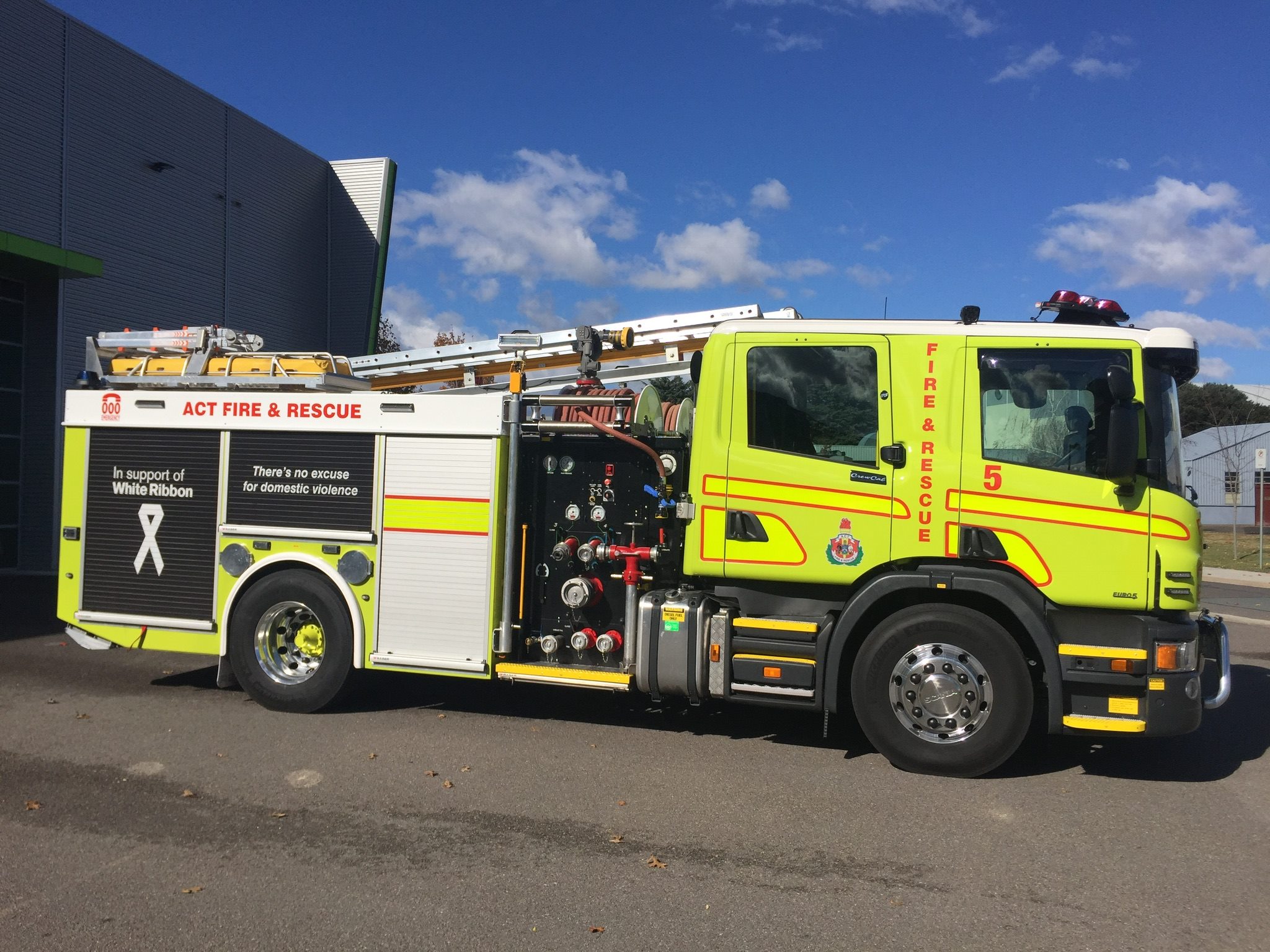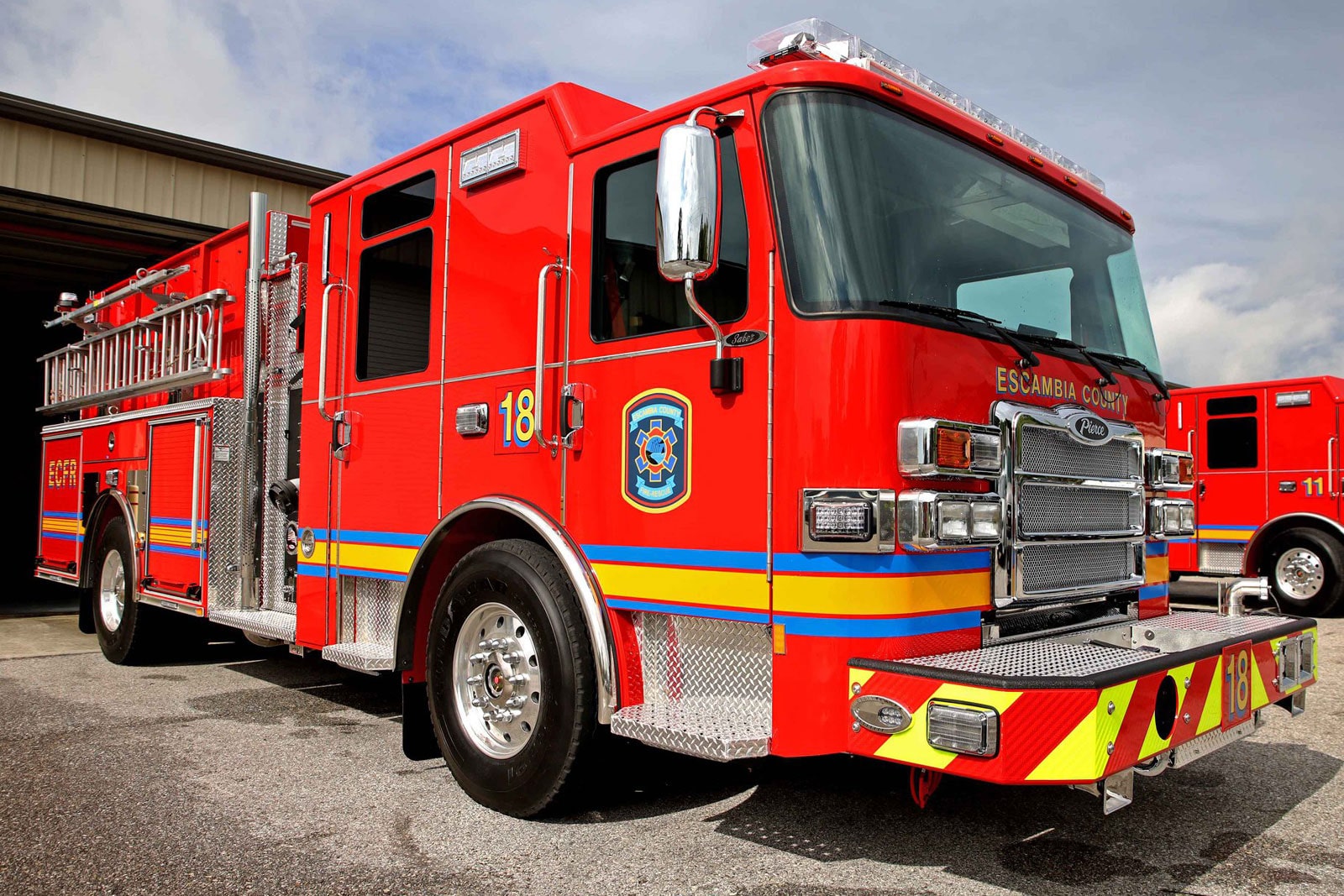Have you ever wondered why are firetrucks red, and are there any other colours of paint commonly used on fire trucks? While red is typical, you will also see yellow, blue, purple, pink and even black fire trucks running calls all around the world, and there won’t be a mandatory country–wide apparatus color change for fire departments any time soon.
Below are some theories on why are firetrucks red, and a history of studies on the science behind colours.
Why Are Firetrucks Red: The Most Common Theory

Today, red remains by far the most popular color for fire trucks and a variety of other emergency vehicles. While there are many jokes relating to the red paint used on fire trucks, the most common and accepted theory holds that fire trucks were painted red to make them stand out from all the other vehicles on the road.
Many believe fire trucks were first painted red to stand out among the black vehicles on the road, the most common colour paint used on early cars. In the 1900s, Henry Ford suggested the color black for his Model T Ford’s due to the cheap cost and durability of the paint.
Model T Fords were reliable and affordable, so there were many black Model T Fords roaming around. And with mostly black vehicles on the road, red fire trucks would vividly stand out.
Standing out from the crowd is obviously a good quality for a fire truck or any emergency vehicle. That said, another important question is whether red is the color most easily seen after dark. Studies have shown that rather than red, yellow or lime green that stands out the most at night.
Since the introduction of these studies, fire trucks over the world have taken on other colours, including white, yellow, blue, orange, green, and even black. The history of such colour change actually has pretty interesting scientific backing.
READ MORE
Why Are Firetrucks Red: History and Science
A study released in 2004 by Lt. James D. Wells Jr., on behalf of the Florida Highway Patrol, found that red lights were easier to see during the day and more difficult at night. This suggests that red vehicles, which reflects red lights to our eyes, are not the most visible after dark.
In England, a research by the Lanchester College of Technology and Coventry Fire Brigade in 1965 showed that the color lime or bright yellow was easier to see than red at night and actually also more visible in a variation of lighting. Other researches also found that the color yellow was more visible during inclement weather.
After these findings, most UK fire departments started including retroreflective yellow markings on their fire trucks. There were a few similar studies in the US with the same results. Now, in the suburbs and smaller cities around the US as well, we’re progressively seeing more and more lime or bright yellow fire trucks.

In their four-year study published in 1995, James King and Stephen Solomon, a New York optometrist, analyzed accident data from the Dallas Fire Department and found that crash-related incidents involving apparatus were three times greater for red or red and white fire trucks compared to lime-yellow and white trucks. They concluded that red is a poorly detected color and lime yellow is more visible in varying circumstances.
Stephen Solomon also conducted another study that suggests that lime-yellow fire trucks were half as likely to be involved in intersection accidents. As a result, in the 1970s and early 1980s, the Dallas Fire Department began painting their red fire trucks with lime-yellow paints.
In addition to the move from red to lime yellow, retro-reflective striping was also introduced into the scene. In 2009, a U.S. Fire Administration study concluded that retro-reflective striping significantly increases a vehicle’s visibility after dark. The NFPA released a voluntary national standard in 2009 for fire trucks that required retro-reflective striping.
For more interesting and useful information in the automotive world, head to our comprehensive maintenance guides.
READ MORE



